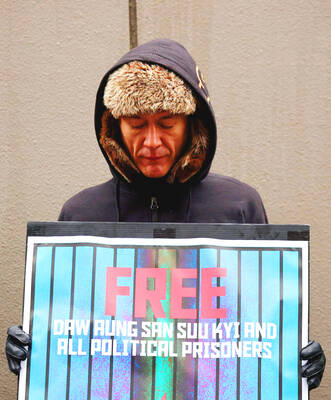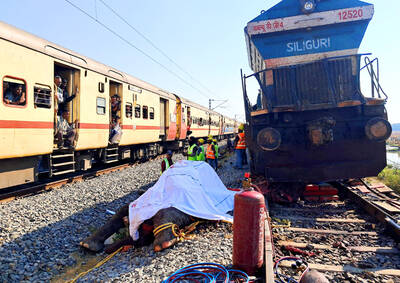Shyam Sharma’s marriage request in the Times of India’s classified section reads more like an eye chart than a matrimonial advertisement: SM/KKB invited 4 PQM earning 15 LPA.
Acronyms aside, Sharma is a professionally qualified match earning 15 lakhs (US$30,000) per annum seeking a suitable match who belongs to the Kanya Kubja Brahmin caste. To the untrained eye, the matchmaking vernacular that floods the matrimonial pages of Indian newspapers every Sunday can seem puzzling.
But for the lonely hearts — or their parents — who regularly pore over these ads, each detail, no matter how trivial, could potentially make or break an alliance. Personal ads cover every aspect of a person’s life that is considered important in India — religion, caste, profession, family status, dietary habits and skin complexion — which ranges from “fair” to “wheatish” to “very dark” in this color-conscious nation.
Even intimate details about whether or not an annulled marriage has been consummated are not off limits to people desperately seeking a partner. Fifteen hundred rupees (US$30) later, Sharma — whose advertisement describes him as a “V. h’some, fair, tall and smart boy” — says he has received a few responses from women who fit the ideal image.
“I have some figure in my mind and I want a girl according to that only,” the 28-year-old teacher said as he rolled off a list of requirements. “My height is 5’11” so at least I want a height of 5’4” and fair color and the features should be sharp and they should be beautiful. And for education, at least she should be a graduate.”
Any prospective spouse should be no older than 26, he said, considered a ripe age for settling down in India. Many families who opt for traditional arranged marriages choose to tap into their network of friends and acquaintances before turning to matchmaking services, viewed as a last resort for those who have weak family connections or have been overseas for some time.
“We have a very small family and we don’t have good social contacts and that’s why I’ve placed an ad,” he said.
Within the lucrative matchmaking industry, newspaper advertisements have emerged as the medium of choice for families who are not quite Internet savvy, even if they limit the scope of potential matches.
“A profile posted in a matrimonial classified column only gives one access to potential matches in one’s local area, which leads to narrow search results,” said Gourav Rakshit, business head at shaadi.com, one of the most popular matrimonial sites for South Asians worldwide.
Joycelin Jose, head of the matrimonial classified section of the Hindustan Times, said the paper’s clientele was “a mixed bag, cutting across socio-economic groups.”
“There are loads of people who come to us to find a match because they find it more reliable,” she says.

The Burmese junta has said that detained former leader Aung San Suu Kyi is “in good health,” a day after her son said he has received little information about the 80-year-old’s condition and fears she could die without him knowing. In an interview in Tokyo earlier this week, Kim Aris said he had not heard from his mother in years and believes she is being held incommunicado in the capital, Naypyidaw. Aung San Suu Kyi, a Nobel Peace Prize laureate, was detained after a 2021 military coup that ousted her elected civilian government and sparked a civil war. She is serving a

REVENGE: Trump said he had the support of the Syrian government for the strikes, which took place in response to an Islamic State attack on US soldiers last week The US launched large-scale airstrikes on more than 70 targets across Syria, the Pentagon said on Friday, fulfilling US President Donald Trump’s vow to strike back after the killing of two US soldiers. “This is not the beginning of a war — it is a declaration of vengeance,” US Secretary of Defense Pete Hegseth wrote on social media. “Today, we hunted and we killed our enemies. Lots of them. And we will continue.” The US Central Command said that fighter jets, attack helicopters and artillery targeted ISIS infrastructure and weapon sites. “All terrorists who are evil enough to attack Americans are hereby warned

Seven wild Asiatic elephants were killed and a calf was injured when a high-speed passenger train collided with a herd crossing the tracks in India’s northeastern state of Assam early yesterday, local authorities said. The train driver spotted the herd of about 100 elephants and used the emergency brakes, but the train still hit some of the animals, Indian Railways spokesman Kapinjal Kishore Sharma told reporters. Five train coaches and the engine derailed following the impact, but there were no human casualties, Sharma said. Veterinarians carried out autopsies on the dead elephants, which were to be buried later in the day. The accident site

‘EAST SHIELD’: State-run Belma said it would produce up to 6 million mines to lay along Poland’s 800km eastern border, and sell excess to nations bordering Russia and Belarus Poland has decided to start producing anti-personnel mines for the first time since the Cold War, and plans to deploy them along its eastern border and might export them to Ukraine, the deputy defense minister said. Joining a broader regional shift that has seen almost all European countries bordering Russia, with the exception of Norway, announce plans to quit the global treaty banning such weapons, Poland wants to use anti-personnel mines to beef up its borders with Belarus and Russia. “We are interested in large quantities as soon as possible,” Deputy Minister of National Defense Pawel Zalewski said. The mines would be part